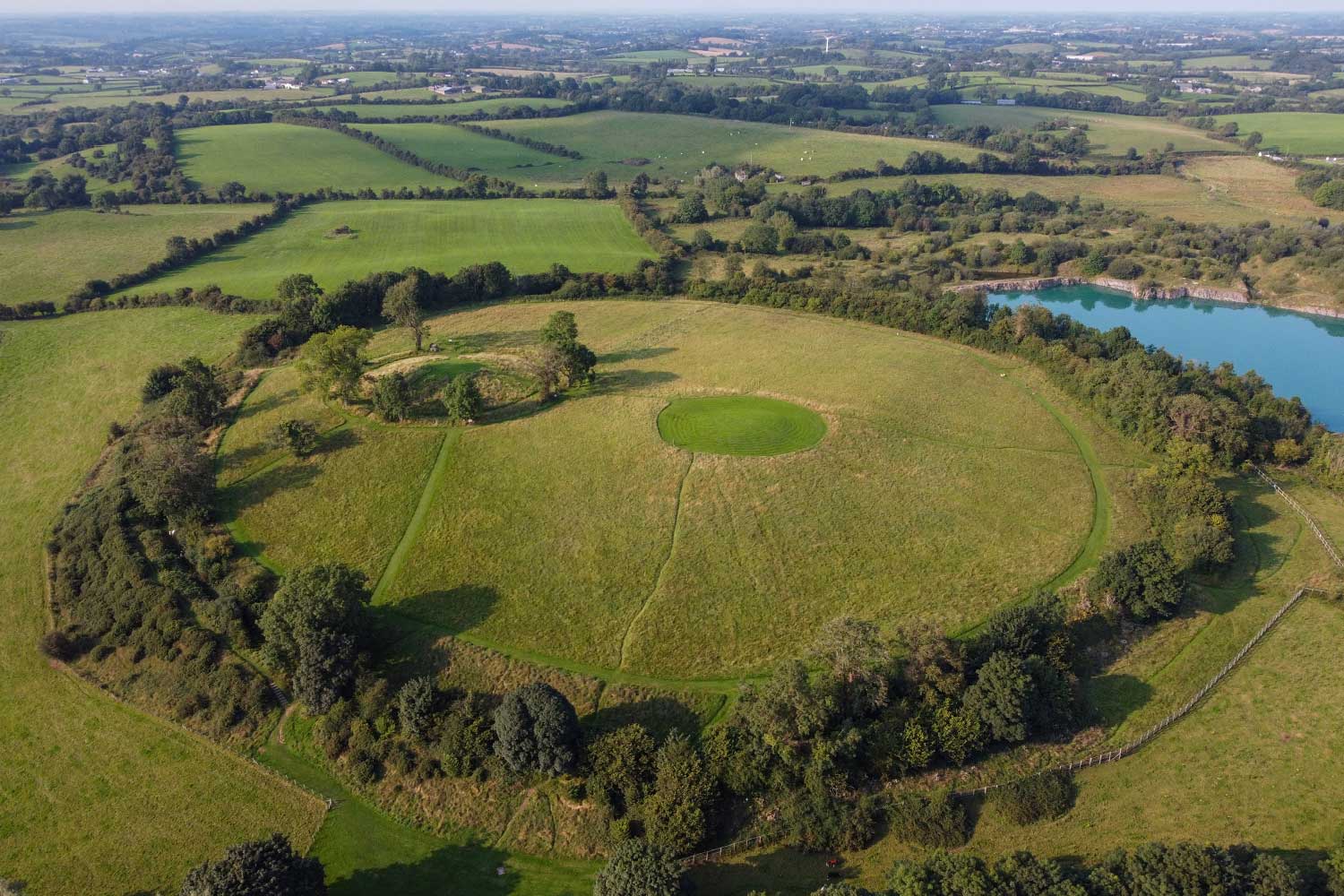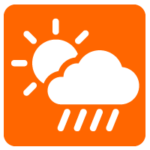Emain Macha

Location: Navan, Co. Armagh
Classification: Hilltop Enclosure
Rating:
Emain Macha, sometimes called Navan Fort, is a State Care Historic Monument about 2.6 km west of Armagh. The site consists of a circular enclosure 250 metres in diameter, marked by a bank and ditch. The ditch is on the inside, suggesting it was built for ceremonial purposes rather than defence. Inside the enclosure two monuments are visible. Off-centre to the north-west is an earthen mound 40m in diameter and 6m high. Off-centre to the south-east is the circular impression of a ring-barrow, the flattened remains of a late prehistoric ceremonial or burial mound, about 30m in diameter. Completed around the 1st Century BC, it is the ancient ceremonial seat of the Kings of Ulster.
Archaeological excavations have revealed that the construction of the bank and ditch that mark the enclosure dates to 95 BC. The 40m earthen mound was constructed at the same time. A timber roundhouse-like structure was built on the mound, with its entrance facing west, suggesting it was not a dwelling. The whole structure was deliberately burnt down before being covered in a mound of earth and turf (there is archaeological evidence for similar repeated building and burning at Tara and Dún Ailinne). The Annals of the Four Masters record that Emain Macha was abandoned after it was burnt by the Three Collas in 331 AD, after they had defeated Fergus Foga, King of Ulster, in a battle at Achadh Leithdheirg. No firm date can be assigned to the ring-barrow, but excavations and geophysical surveys have revealed the remains of a figure-of-eight shaped wooden building underneath. Artefacts found in these layers show they were inhabited in the late Bronze Age and early Iron Age (c. 600 BC - 250 BC). Perhaps the most unusual item found in these layers was the skull of a Barbary macaque.
According to Irish mythology and historical tradition Emain Macha was the capital of the Ulaidh, the people who gave their name to the province of Ulster. Founded by the goddess Macha, it was the seat of Conchobar mac Nessa in the tales of the Ulster Cycle. Emain Macha was defended by the legendary Red Branch Warriors and the hero Cú Chulainn. The name Emain Macha is variously explained as "Macha's twins" (so named because Macha gave birth to twins there after being forced to compete in a chariot-race while pregnant) or "Macha's neck-brooch" (so named because Macha marked out the bounds of the site with her brooch).
Description
Emain Macha, sometimes called Navan Fort, is a State Care Historic Monument about 2.6 km west of Armagh. The site consists of a circular enclosure 250 metres in diameter, marked by a bank and ditch. The ditch is on the inside, suggesting it was built for ceremonial purposes rather than defence. Inside the enclosure two monuments are visible. Off-centre to the north-west is an earthen mound 40m in diameter and 6m high. Off-centre to the south-east is the circular impression of a ring-barrow, the flattened remains of a late prehistoric ceremonial or burial mound, about 30m in diameter. Completed around the 1st Century BC, it is the ancient ceremonial seat of the Kings of Ulster.
History
Archaeological excavations have revealed that the construction of the bank and ditch that mark the enclosure dates to 95 BC. The 40m earthen mound was constructed at the same time. A timber roundhouse-like structure was built on the mound, with its entrance facing west, suggesting it was not a dwelling. The whole structure was deliberately burnt down before being covered in a mound of earth and turf (there is archaeological evidence for similar repeated building and burning at Tara and Dún Ailinne). The Annals of the Four Masters record that Emain Macha was abandoned after it was burnt by the Three Collas in 331 AD, after they had defeated Fergus Foga, King of Ulster, in a battle at Achadh Leithdheirg. No firm date can be assigned to the ring-barrow, but excavations and geophysical surveys have revealed the remains of a figure-of-eight shaped wooden building underneath. Artefacts found in these layers show they were inhabited in the late Bronze Age and early Iron Age (c. 600 BC - 250 BC). Perhaps the most unusual item found in these layers was the skull of a Barbary macaque.
Folklore
According to Irish mythology and historical tradition Emain Macha was the capital of the Ulaidh, the people who gave their name to the province of Ulster. Founded by the goddess Macha, it was the seat of Conchobar mac Nessa in the tales of the Ulster Cycle. Emain Macha was defended by the legendary Red Branch Warriors and the hero Cú Chulainn. The name Emain Macha is variously explained as "Macha's twins" (so named because Macha gave birth to twins there after being forced to compete in a chariot-race while pregnant) or "Macha's neck-brooch" (so named because Macha marked out the bounds of the site with her brooch).
Accessibility Rating: Easy
Navan Centre & Fort [Emain Macha], Killylea Road, Armagh, Co. Armagh. Telephone: +44 (0) 28 3752 9644 or visit www.navan.com
Visitor Centre & Heritage Park
Accessibility
Accessibility Class: Easy
Navan Centre & Fort [Emain Macha], Killylea Road, Armagh, Co. Armagh. Telephone: +44 (0) 28 3752 9644 or visit www.navan.com
Facilities
Visitor Centre & Heritage Park
Map
Users should note that the Monumental Ireland application and website are information guides only and do not act as an invitation to enter any of the properties or sites listed. No responsibility is accepted by the creators of the Monumental Ireland application for any loss, injury or inconveniences sustained as a result of using it.











